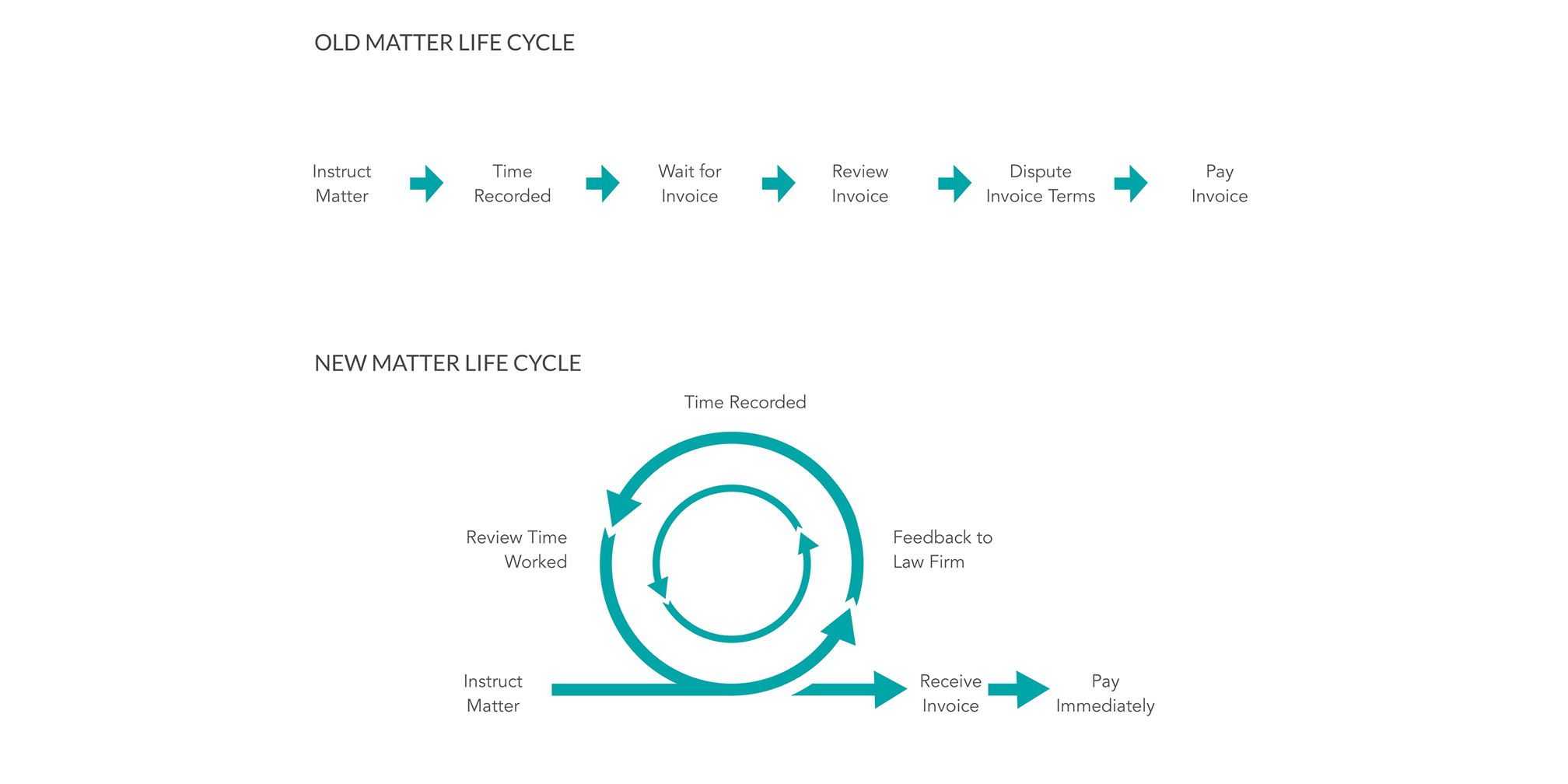Feedback loops in your legal department - it’s good to go round in circles

General Counsel are under the same pressures as every other leader in a business: to promote operational excellence and demonstrate strategic value.
They can seek to demonstrate new value by trimming costs; but that’s not an inexhaustible source of benefit, and in any case, if a business is in a growth phase, being frugal can be precisely the wrong thing to do. Operational excellence in fact means making resourcing decisions that are appropriate to current commercial circumstances, responsive to competitive pressures and targeted to desired outcomes.
Management books are full of metaphors for business situations, but there are few approaches which represent a blueprint for that sort of decision making. One such approach comes – very literally – from out of the blue.
John Boyd was a renowned US fighter pilot and military strategist. After a stint in Korea, he became an instructor at the US Fighter Weapons School (FWS), consulted for the Pentagon and is often called the “Father of the F-16”; the lightweight fighter jet still in use by the US military today. Boyd was clearly capable in the air, but we’re interested in his skills as a theoretician. You see, Boyd was committed to the value of strategy; realising that with smart thinking, he could create competitive advantage out of seemingly nothing.
In fact, in his instructor days at FWS, John Boyd earned the sobriquet “Forty Second Boyd” for his claim that – even in a disadvantaged aircraft - he could win any dogfight scenario in under 40 seconds.
How?
Boyd is credited with several military strategies, but he is best known for what has been called the “Boyd Loop” or “OODA Loop”. OODA stands for “Observe, Orient, Decide, Act”; and whilst that may seem simplistic, there is ample depth to the theory.
With the law often seen as close as businesses get to the battlefield, OODA is also prized among legal strategists (see Dreier’s “Strategy, Planning & Litigating to Win” for examples). But, not surprisingly, OODA has also rapidly found its way from military thinking into business strategy over the past thirty years or so; and can be applied to the business of law as effectively as the combat of the courtroom.
OODA is a cycle. It recognises that situations change continuously, over time and that we may not be in control of all the parameters in that situation. Undertaking large scale up front planning, and then committing completely to one course of action and following it through blindly as events unfold is foolhardy. Instead, smart fighter pilots - and now CEOs and lawyers too - emphasise the need to make rapid, repeated re-assessments and readjustments. They can then react to a constantly shifting landscape (dealing with things you don’t have control over), and optimise on their own strategies (getting the best out of the things you do have control over). OODA teaches us to run through the cycle and then repeat, making incremental changes and adapting your plans with each iteration, and do this as quickly as possible.
In business, iteration is a hugely powerful proposition, because it de-risks every activity. Taking a punt on an idea is risky: it could go wrong. But treating every action as a “sighting shot”, getting progressively closer to an ideal bullseye, reduces risk and increases confidence with every attempt.
Clearly, however, the cost of iteration is repetition; and that means the faster you can run through each cycle, the more competitive your operation will be. One seminal article on the subject in the Harvard Business Review said: “In top-performing companies, fast cycle time plays two important roles. First… the faster information, decisions, and materials can flow through a large organization, the faster it can respond to customer orders or adjust to changes in market demand and competitive conditions… Second, fast cycle time is a management paradigm, a way of thinking about how to organize and lead a company and how to gain real advantage over competitors… these days, the penalty for standing still is far higher than the cost of change.”
OODA is impossible without access to high quality, up-to-date information. The OODA cycle begins with observation: a fighter pilot begins with their windows and instruments, a manager begins with the business intelligence of an increasing range of connected systems. Without feedback, or with the wrong inputs, we make inadequate – and therefore costly – decisions.
Furthermore, because OODA is iterative, the wrong data can undo all the good work of the process we discussed above: just as good inputs can allow us to refine an activity for an optimum outcome, false or inaccurate inputs can lead to over or under correction with each and every iteration.
A particularly insidious challenge is the natural inertia within businesses and the effect that this can have on feedback loops. Systems specialists use metaphors like a shower (it’s hard to get the perfect temperature, because you only feel the effect of altering the control several seconds later) or, most dramatically perhaps, a fishtailing car – which happens because the driver overcompensates his steering inputs to deal with the circumstances of the road, leading to ever more violent movements.
These metaphors explain the problem: when information takes time to dig out from the data, or the effect of an adjustment takes time to be felt in the business, decision-makers can find themselves with what might be excellent data, but it arrives in the hands of decision makers too late to be actionable. Speed of feedback is critical.
Rather like a smooth-running engine, with fuel and air injected to the system at the right moment, an optimal business has data (information, inputs) and resource (talent, money etc.) applied at the right time to the right problems to gain the ideal outcome. Out of sync, the engine is dysfunctional and wasteful.
Most legal departments, however, are a long way from the smooth-running engine. The process of being billed for legal work and then paying for it can be 120+ days – that’s a feedback cycle so long you might only have time for one or two process corrections and feedback loops a year.

Comparison of the process to instruct a law firm on a matter and pay invoice using traditional cycle and OODA cycle.
And the activities associated with each cost – for example, how much money has been spent on what skills in a legal team – are often thoroughly opaque. That’s the hallmark of weak information.
The General Counsel responsible for locking down legal budgets under these circumstances has neither the adequate information to hand, nor a rapid enough cycle, to usefully engage in continuous improvement or demonstrate an optimal approach to the business of the department.
Instead of making individual, regular, incremental process or policy changes, where the effect of each change can be observed and understood, in isolation, the General Counsel is forced into making wholesale, more drastic changes, maybe once a year or every few years. This could be swapping out a whole law firm, or renegotiating all the rates or pouring energy into managing and negotiating AFAs. These big bang changes can introduce new risks and encourage new unintended and unforeseen behaviours. Even when improvement does occur, attribution is impossible - which of the numerous changes we made at once, were responsible for the improvement we saw? Is the new situation optimal? The GC can only speculate.
Today, that is no longer an option. The idea that a senior leadership role can operate without clarity on all the main parameters of the business is inconceivable. The HBR again: “Fast-cycle companies differ from traditional organizations in how they structure work, how they measure performance, and how they view organizational learning. They use time as a critical performance measure. They insist that everyone learn about customers, suppliers, competitors, and the company’s own operations, not just top management.” Today’s legal team must also measure performance and structure work competitively, too.